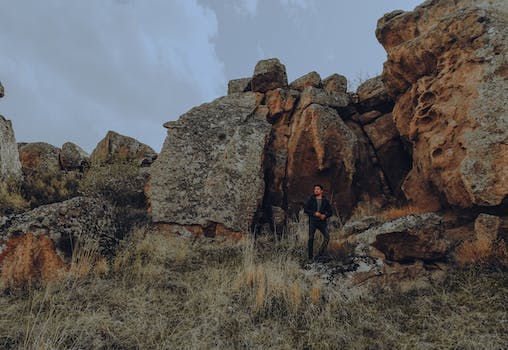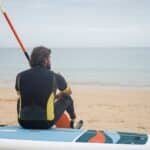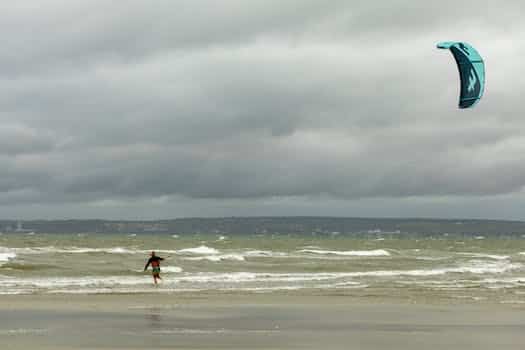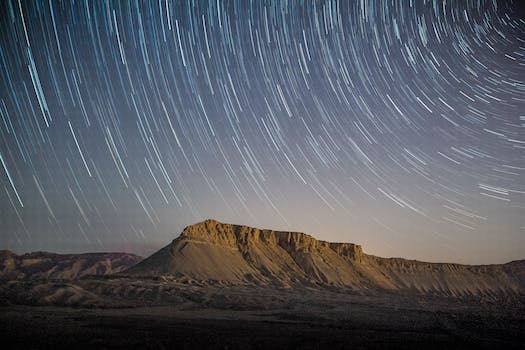Are you looking for an experience that will take you off the main path and deep into the desert? Take a look at desert trekking. There is something for everyone to explore in the wide, parched expanse of the desert, with possibilities ranging from a casual stroll to a demanding multi-day expedition. Put on your boots and prepare to discover the stunning landscapes and distinct civilizations that await you on a desert trekking experience.
- 1. Desert Trekking Adventures
- 1.1. Introduction
- 1.2. Preparing for a Desert Trek
- 1.3. Choosing the Right Gear
- 1.4. Navigating the Desert Terrain
- 1.5. Staying Safe in the Desert
- 2. The Best Desert Trekking Destinations
- 2.1. Sahara Desert, Morocco
- 2.2. Wadi Rum, Jordan
- 2.3. Atacama Desert, Chile
- 2.4. Gobi Desert, Mongolia
- 2.5. Thar Desert, India
- 3. Tips for a Successful Desert Trekking Adventure
- 3.1. Stay Hydrated
- 3.2. Protect Yourself from the Sun
- 3.3. Pack Light, but Pack Smart
- 3.4. Follow the Trail Etiquette
- 3.5. Be Mindful of Wildlife
1. Desert Trekking Adventures
If you enjoy new experiences and enjoy adventure, desert trekking is something you should attempt. Walking through large sand dunes and exploring the desert wilderness may be a genuinely amazing experience. With its towering sand dunes, rocky outcrops, and oasis, the desert has a one-of-a-kind landscape. The best aspect is that you may customize the difficulty of your walk, from a leisurely stroll to a difficult climb. The desert has plenty to offer everyone!
There are numerous types of desert treks from which to pick. Some treks are intended for novices, while others are more difficult and need a greater degree of fitness. You can trek on foot, camelback, or even on a quad bike. Whatever your preferences are, there is a desert adventure for you.
The Sahara Desert in North Africa is a renowned desert hiking location. The Sahara is a must-see location for anybody who like adventure, with its sweeping sand dunes and stunning sunsets. Other popular desert destinations include Oman, Jordan, and the United Arab Emirates. These locations provide a distinct blend of culture, history, and adventure.
It is critical to plan ahead of time for your desert trekking excursion. You should bring plenty of water, sunscreen, and sturdy shoes. You should also carry a hat and sunglasses to protect yourself from the sun. Bring warm clothes for the evenings if you’re trekking during the cooler months.
Overall, desert trekking is an incredible journey that everyone should try at least once in their lives. It’s an opportunity to disconnect from the outside world and reconnect with nature. So, what are you holding out for? Make a reservation for your desert trekking excursion today!
1.1. Introduction
Desert trekking activities provide adventure enthusiasts with a one-of-a-kind and thrilling experience. The enormous expanse of the desert gives trekkers with a magnificent yet demanding area to explore. Desert trekking expeditions are a one-of-a-kind experience that will leave you with memories to last a lifetime, from shifting sand dunes to difficult terrain.
1.2. Preparing for a Desert Trek
A desert journey might be a difficult job, but with proper planning and preparation, it can be a wonderful experience. Here are some preparation recommendations for your desert adventure:
1. Research the location: Before you go, do some research about the area you’ll be trekking in. Discover the landscape, climate, and potential threats.
2. Get in shape: Desert hiking may be physically hard, so getting in shape before you go is essential. Begin a fitness regimen that incorporates both cardio and strength training.
3. carry wisely: It is critical to carry lightweight, breathable gear that will protect you from the sun and sand when going on a desert walk. Bring a hat, sunglasses, and sunscreen with you.
4. Stay hydrated: Dehydration is a big risk in the desert, so pack plenty of water and electrolyte-replacing drinks with you.
5. Bring a first-aid kit: Accidents happen, so bring a first-aid kit with bandages, disinfectant, and any prescription prescriptions you may require.
You’ll be well-prepared for your desert hiking expedition if you follow these guidelines.
1.3. Choosing the Right Gear
Desert trekking trips necessitate much planning and preparation, and selecting the appropriate equipment is critical to ensuring a safe and pleasurable journey. Here are some things to think about when choosing your gear:
1. Clothing: The desert can be extremely hot during the day and extremely chilly at night, so dress in layers. Wear light-colored, loose-fitting clothing throughout the day to stay cool, and bring a thick jacket and pants for the chilly nights.
2. Footwear: Get a nice pair of hiking boots with ankle support. Sandals and flip-flops are not advised since they provide minimal protection and can cause blisters.
3. heat protection: The desert heat can be harsh, so bring a hat, sunglasses, and high-SPF sunscreen.
4. Water: Make sure to bring lots of water to stay hydrated. It is advised that each person carry at least 2 liters of water every day.
5. Navigation: For navigating the desert environment, a GPS device or map and compass are required.
You’ll be well-prepared to face the hardships of desert trekking experiences and fully appreciate the beauty of this unique region if you choose the correct gear.
1.5. Staying Safe in the Desert
It is critical to emphasize safety when starting on a desert hiking adventure. The harsh desert climate can be cruel, therefore care must be taken to guarantee a safe and pleasurable vacation. Here are some safety tips for the desert:
1. Drink plenty of water and avoid alcohol and caffeine, both of which can dehydrate you.
2. Dress appropriately: To protect yourself from the sun and sand, wear loose, breathable clothes that covers your skin. Don’t forget to bring a hat and sunglasses.
3. Pack enough of supplies: Bring enough food, drink, and other necessities for the duration of your journey, plus extra for emergencies.
4. Know your limits: Don’t overdo it, especially in intense temperatures. Take breaks as needed and pay attention to your body.
You may ensure a safe and pleasurable desert trekking journey by following these suggestions.
2. The Best Desert Trekking Destinations
Are you seeking for an unforgettable adventure? Then desert hiking might be just what you’re looking for! The following are some of the top desert hiking sites to visit:
1. Morocco’s Sahara Desert – The Sahara Desert is the world’s largest scorching desert, and traveling over its huge sand dunes and rocky terrain is an amazing experience.
2. Wadi Rum, Jordan – Wadi Rum, often known as the Valley of the Moon, is a spectacular desert landscape with towering cliffs and sandstone arches.
3. Atacama Desert, Chile – The Atacama is the world’s driest non-polar desert, with bizarre panoramas of salt flats, geysers, and multicolored rock formations.
4. Mongolia’s Gobi Desert – The Gobi Desert is a large desert of sand dunes, rocky mountains, and grassy plains that is home to nomadic herders and uncommon fauna such as the Bactrian camel.
No matter where you go, desert trekking is a fascinating trip that will test you physically and psychologically while leaving you with memories to last a lifetime.
2.1. Sahara Desert, Morocco
The Moroccan Sahara Desert is one of the most popular desert trekking sites. The Sahara, with its enormous expanse of golden sand dunes and breathtaking vistas, provides adventure seekers with an amazing experience. Visitors may enjoy the calm and tranquillity of the desert landscape while trekking through the desert and witnessing the splendor of the dawn and sunset. There are a variety of trekking routes available, ranging from short day outings to multi-day expeditions. The Merzouga Desert Trek is the most popular path, which takes travelers through the Erg Chebbi dunes, Morocco’s highest sand dunes, and provides stunning views of the surrounding region. The Zagora Desert Trek and the M’hamid Desert Trek are two more popular itineraries. The Sahara Desert in Morocco is a must-see place for anybody wishing to discover the excitement of desert trekking adventures, whether you are a seasoned trekker or a first-time adventurer.
2.2. Wadi Rum, Jordan
Wadi Rum is a magnificent desert region in southern Jordan that has been inhabited by humans for thousands of years. Trekking across Wadi Rum allows you to appreciate the desert’s stark beauty while also immersing yourself in Bedouin culture. The red sandstone cliffs and rock formations are breathtaking, and the beautiful night sky provides unequaled chances for astronomy. The length and difficulty of trekking routes vary, but some popular options include the 3-day walk from Wadi Rum hamlet to the summit of Jabal Umm ad Dami, Jordan’s highest peak, and the 7-day crossing of the entire Wadi Rum Protected Area. Wadi Rum is a must-see place for anybody wishing to discover the thrill of desert trekking adventures, whether you’re an expert trekker or a beginner.
2.3. Atacama Desert, Chile
The Atacama Desert in Chile is one of the best places to go desert trekking. The Atacama Desert, with its huge expanse of sand dunes, rough mountains, and distinctive rock formations, provides hikers and adventurers with a challenging and amazing experience. Because of its harsh conditions and arid temperature, the desert is a popular location for individuals looking for a true test of their endurance and survival skills. The Valle de la Luna, the Tatio Geysers, and the Atacama Salt Flats are among the most popular trekking trails in the Atacama. Whether you’re a seasoned hiker or a first-timer seeking for an adventure, the Atacama Desert will leave you with memories to last a lifetime.
2.4. Gobi Desert, Mongolia
For good reason, the Gobi Desert is one of the world’s most famous deserts. This huge desert, located in southern Mongolia and northern China, spans over 500,000 square miles and provides a one-of-a-kind trekking experience. The Gobi is famous for its stunning vistas, which include towering sand dunes, rocky canyons, and large swaths of barren ground. Trekking through the Gobi Desert is an excursion that will take you through some of the world’s most spectacular and harsh environments. Along the trip, you’ll come across nomadic tribes, historical ruins, and breathtaking animals like as wild horses, camels, and gazelles. If you’re seeking for a breath-taking desert trekking excursion, the Gobi Desert in Mongolia is the place to go.
2.5. Thar Desert, India
The Thar Desert, also known as the Great Indian Desert, is a huge and dry region in northern India. It has an area of over 77,000 square miles and is home to a wide variety of flora and animals, including some endangered species like the Indian wild ass and the Great Indian bustard. Trekking through the Thar Desert is an extraordinary experience, with sand dunes stretching as far as the eye can see. The Thar Desert is best visited between October and March, when the weather is cooler. The Sam Sand Dunes, Khuri Sand Dunes, and Osian Sand Dunes are among the most popular walking trails in the Thar Desert.
3. Tips for a Successful Desert Trekking Adventure
1. Research the location you will be trekking in ahead of time. Familiarize yourself with the landscape, the weather, and any potential hazards.
2. Pack carefully. To protect yourself from the sun, bring plenty of water, sunscreen, a hat, and light clothing. Also, carry plenty of food and snacks to keep your energy levels up.
3. Put on proper shoes. Choose shoes that are comfortable, long-lasting, and give adequate foot support.
4. Stick to the established pathways and be mindful of your surroundings. Desert views can be misleading, and it is simple to become disoriented or lost.
5. Be environmentally conscious. Avoid disturbing wildlife or plant life, and remove all rubbish.
6. Finally, have fun with it! Desert trekking is a difficult but rewarding journey that allows you to connect with nature and push yourself to new boundaries.
3.1. Stay Hydrated
Staying hydrated is one of the most crucial things to consider when embarking on a desert hiking journey. Dehydration can be hazardous and even life-threatening due to the dry air and scorching temperatures. Bring lots of water with you and drink frequently throughout the day. Bring electrolyte tablets or sports drinks with you to restore lost minerals and nutrients.
3.2. Protect Yourself from the Sun
It is critical to protect oneself from the sun when going on a desert hiking excursion. The desert sun may be harsh and cruel, so taking care to avoid sunburn, dehydration, and other heat-related ailments is critical. Here are some sun safety guidelines to keep you safe and comfortable:
1. Wear a hat and sunscreen: A hat with a wide brim will give shade for your face and neck, while sunscreen will protect your skin from UV rays. Choose a sunscreen with a high SPF and reapply it frequently.
2. Stay hydrated: Even if you don’t feel thirsty, drink lots of water throughout the day. In the desert, dehydration can creep up on you quickly, so it’s critical to stay ahead of it.
3. Take shade breaks: If you begin to feel overheated or exhausted, take a pause in the shade to cool down and rest.
You may enjoy the thrill of desert trekking without jeopardizing your health by adopting some easy steps.
3.3. Pack Light, but Pack Smart
When going on a desert hiking excursion, it’s important to pack light but also wise. This entails bringing only the necessities, but ensuring that those necessities are of good quality and can serve several functions. A lightweight, robust tent that can resist harsh desert conditions, for example, is a must-have, as is a dependable water filtration system to provide access to safe drinking water. Furthermore, clothes should be lightweight, breathable, and sun-protective. Don’t forget to bring a headlamp or flashlight, as it can get fairly dark in the desert at night. You’ll be able to enjoy your desert trekking journey without being bogged down by unneeded stuff if you pack light yet pack smart.
3.4. Follow the Trail Etiquette
It is critical to follow trail etiquette when embarking on a desert trekking excursion to guarantee a safe and pleasurable experience. Staying on approved paths, respecting species and their ecosystems, leaving no trace, and being kind to other hikers are all part of this. It is also critical to remove any rubbish and avoid disturbing any historical or cultural places. Following these principles will not only safeguard the natural ecosystem, but will also ensure that future generations will be able to appreciate the desert’s splendor.
3.5. Be Mindful of Wildlife
When embarking on a desert trekking excursion, keep in mind that you will be entering the natural habitat of numerous wildlife species. Respect their personal space and avoid upsetting them whenever feasible. This includes not making loud noises or making unexpected movements that may scare animals, as well as not feeding or touching them. Additionally, to avoid attracting wildlife to your campground, pack out all of your rubbish and dispose of it properly.
Conclusion
Finally, going on a desert trekking expedition is a very thrilling event that will leave you with lasting memories. Exploring the world’s most dry locations offers something genuinely distinctive, from spectacular vistas to one-of-a-kind cultural encounters. So why not take the plunge and experience the enchantment of desert trekking for yourself?





